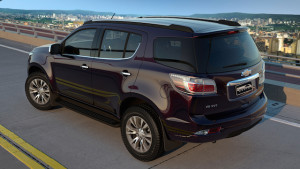
The upgraded Holden Colorado 7 will arrive in New Zealand later this year with a new name, Trailblazer.
Holden says it decided on the new handle because of “customer feedback and a change in vehicle design”.
A more convincing explanation would be that it wants to separate the seven-seat SUV from its donor car, the workhorse Colorado ute.

In doing so it follows the examples of its main rivals. The Ford Everest SUV is based on the Ranger ute; likewise the Toyota Fortuner on the Hilux, and the Mitsubishi Pajero Sport on the Triton.
Holden New Zealand managing director Kristian Aquilina said: “The move to adopt the Trailblazer name emphasises the vehicle’s new direction into a more luxurious and premium space.
“Like its Colorado sibling, the new 2017 Trailblazer will be introduced to New Zealand with significant improvements.
“We have great aspirations for the redesigned 2017 Trailblazer, as we have dialled up the luxury and ride comfort to offer a more premium SUV that’s comfortable and confident in urban areas, but remains just as capable for weekend adventures.
The Trailblazer badge is not exactly new. Chevrolet has used it since the late 1990s, when it appeared in the United States on the premium version of the Blazer, an SUV that had been around in one form or another since the late 1960s.

The Colorado ute will hang on to its moniker. Both Colorado and Trailblazer get more of an American look about them, with added chrome, LED daytime running lights, and new tail-light surrounds.
Inside, both pick up a new dashboard design and improved materials and trim. An eight-inch touchscreen houses an infotainment package that comes with Apple CarPlay and Android Auto.
Holden dynamics engineer Rob Trubiani said his team set out to better isolate the cabin from noise, vibration and harshness.
“Trailblazer will be used by customers in a variety of ways so we had to ensure its performance was versatile and capable but also refined, “ he said.
“The vehicle will be mostly used by families and those expecting a more premium experience so, when working with the Brazilian homeroom, we’ve focused on reducing noise and vibration as well as ride isolation, to give customers a comfortable cabin environment.”
